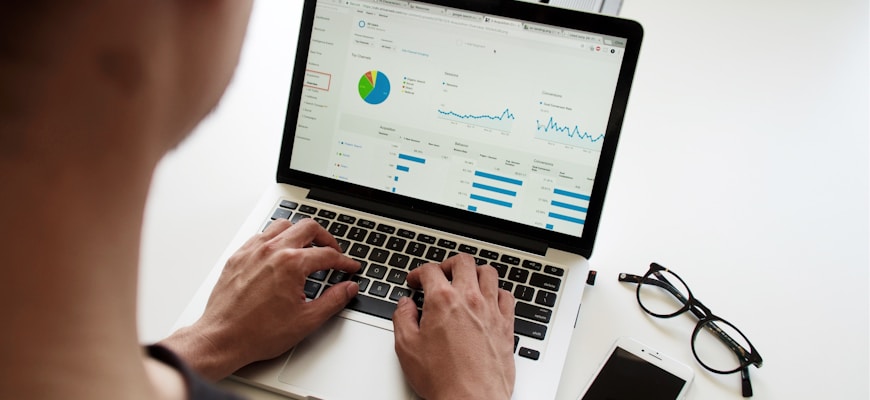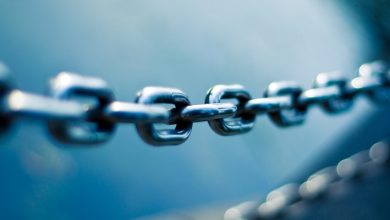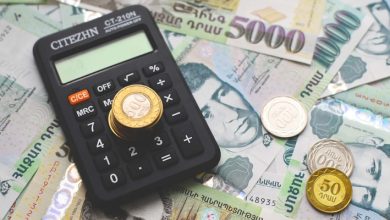The Role of Oracles in Connecting Blockchain with Real-World Data

- Understanding the importance of oracles in blockchain technology
- How oracles bridge the gap between blockchain and real-world data
- The challenges of connecting blockchain with real-world data
- Exploring the different types of oracles used in blockchain
- The role of oracles in ensuring data integrity on the blockchain
- Case studies showcasing the impact of oracles in real-world applications
Understanding the importance of oracles in blockchain technology
Oracles play a crucial role in blockchain technology by acting as a bridge between the blockchain network and the real world. They are third-party services that provide smart contracts with external information to trigger the execution of predetermined actions when certain conditions are met. This capability is essential for blockchain applications that require data from the outside world to function effectively.
Without oracles, blockchain networks would be limited to processing only data stored within the blockchain itself, severely restricting their potential use cases. By connecting blockchain with real-world data, oracles enable smart contracts to interact with external systems, such as APIs, sensors, and payment systems. This integration opens up a wide range of possibilities for decentralized applications across various industries, including finance, supply chain, and healthcare.
Oracles are designed to ensure the accuracy and reliability of the data they provide to smart contracts. This is achieved through various mechanisms, such as data aggregation, consensus algorithms, and reputation systems. By using multiple oracles to source and verify information, blockchain applications can mitigate the risk of data manipulation or errors, enhancing the overall security and trustworthiness of the system.
How oracles bridge the gap between blockchain and real-world data
Oracles play a crucial role in bridging the gap between blockchain technology and real-world data. This connection is essential for blockchain applications to access data from external sources, enabling smart contracts to interact with real-world events and information. Oracles act as intermediaries that fetch and verify data from off-chain sources and deliver it to the blockchain in a secure and trustless manner.
By utilizing oracles, blockchain applications can leverage external data to trigger automated actions based on predefined conditions. This capability expands the functionality of smart contracts beyond the constraints of on-chain data, allowing for a wide range of use cases in various industries. For example, decentralized finance (DeFi) platforms rely on oracles to obtain price feeds for assets, enabling functions such as automated trading, lending, and borrowing.
Oracles ensure the accuracy and reliability of off-chain data by utilizing consensus mechanisms, cryptographic proofs, and reputation systems. This validation process helps prevent data manipulation and ensures that the information provided to smart contracts is authentic and up-to-date. Additionally, oracles enable blockchain networks to interface with IoT devices, APIs, payment systems, and other external sources, opening up new possibilities for decentralized applications.
Overall, oracles serve as the vital link between blockchain technology and real-world data, enabling the seamless integration of external information into decentralized systems. As the adoption of blockchain technology continues to grow, the role of oracles will become increasingly important in ensuring the efficiency, security, and scalability of blockchain-based applications. By facilitating the flow of trusted data between the blockchain and the real world, oracles play a key role in driving innovation and expanding the capabilities of decentralized systems.
The challenges of connecting blockchain with real-world data
The challenges of integrating blockchain with real-world data are manifold. One of the main obstacles is the issue of data reliability. Since blockchain operates on a trustless system, ensuring the accuracy and validity of external data sources can be a significant challenge. This is where oracles come into play, acting as a bridge between the blockchain and real-world data feeds.
Another challenge is the issue of data security. Connecting blockchain with external data sources opens up potential vulnerabilities that could be exploited by malicious actors. Oracles need to implement robust security measures to protect the integrity of the data being fed into the blockchain.
Furthermore, there is a challenge of scalability. As blockchain technology continues to evolve and attract more users, the demand for real-time data feeds will increase exponentially. Oracles must be able to handle this influx of data while maintaining the speed and efficiency of blockchain transactions.
Exploring the different types of oracles used in blockchain
Oracles play a crucial role in connecting blockchain technology with real-world data, ensuring that smart contracts can execute based on accurate information. There are several types of oracles used in blockchain to facilitate this connection:
- Hardware Oracles: These oracles rely on physical devices to provide real-world data to the blockchain. They can be sensors, RFID tags, or any other hardware that can transmit data securely.
- Software Oracles: Software oracles use software algorithms to fetch and verify external data before transmitting it to the blockchain. They can automate the process of data retrieval and verification, making it more efficient.
- Consensus Oracles: Consensus oracles rely on a network of multiple oracles to reach an agreement on the validity of external data. This helps prevent single points of failure and ensures data accuracy.
- Tokenized Oracles: Tokenized oracles use tokens to incentivize accurate data reporting. Participants are rewarded for providing correct information and penalized for providing false data, ensuring data integrity.
- Decentralized Oracles: Decentralized oracles operate without a central authority, relying on a network of nodes to retrieve and verify external data. This decentralized approach enhances security and trust in the oracle system.
Each type of oracle has its own strengths and weaknesses, and the choice of oracle depends on the specific requirements of the blockchain application. By exploring the different types of oracles used in blockchain, we can better understand how they function and contribute to the overall reliability of smart contracts.
The role of oracles in ensuring data integrity on the blockchain
Oracles play a crucial role in maintaining the integrity of data on the blockchain by connecting it with real-world information. By acting as intermediaries between the blockchain and external sources, oracles ensure that data entered into smart contracts is accurate and reliable. This is essential for various decentralized applications that rely on up-to-date and trustworthy data to function effectively.
Oracles can verify information such as asset prices, weather conditions, sports scores, and more, and feed this data into the blockchain in a secure and tamper-proof manner. This helps smart contracts make informed decisions and execute actions based on real-world events. Without oracles, blockchain applications would be limited to only processing data that exists within the blockchain itself, severely restricting their capabilities.
By leveraging oracles, blockchain networks can access a wealth of external data that can enhance their utility and value. However, it is important to select reputable and reliable oracles to prevent the introduction of inaccurate or manipulated data onto the blockchain. This underscores the critical role that oracles play in maintaining the integrity and trustworthiness of data on the blockchain.
Case studies showcasing the impact of oracles in real-world applications
Case studies provide valuable insights into the practical applications of oracles in the blockchain ecosystem. These real-world examples demonstrate how oracles bridge the gap between on-chain smart contracts and off-chain data sources, enabling decentralized applications to access external information securely and reliably.
One notable case study involves a decentralized insurance platform that uses oracles to trigger payouts automatically based on predefined conditions. By connecting with real-world data feeds, such as weather forecasts or flight delays, the platform can execute claims without the need for human intervention. This automation not only streamlines the claims process but also reduces the potential for fraud.
Another compelling example is a supply chain management system that leverages oracles to track the provenance of goods across the network. By integrating data from IoT devices, sensors, and external databases, the system can verify the authenticity and quality of products at each stage of the supply chain. This transparency helps to build trust among stakeholders and minimize the risk of counterfeit goods entering the market.
Furthermore, oracles play a crucial role in decentralized finance (DeFi) applications, such as decentralized exchanges (DEXs) and lending platforms. By providing price feeds, asset valuations, and market data, oracles enable DeFi protocols to execute trades, liquidate positions, and calculate interest rates accurately. This real-time data integration is essential for maintaining the integrity and efficiency of DeFi ecosystems.



